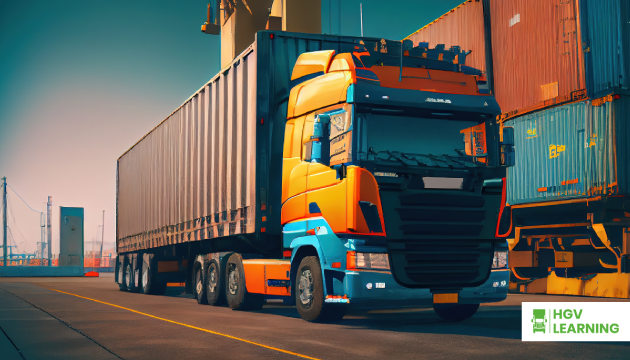Related Articles

24/07/2024
How Do I Get An HGV Provisional Licence?

22/07/2024

HGV or Heavy Goods Vehicle licences are essential for drivers who want to operate heavy commercial vehicles in the UK. There are different types of HGV licences, each with specific requirements and restrictions. In this blog post, we will discuss the most common types of HGV licences, arming you with the info required to choose which is best for you.
The C1 licence is a category of HGV licence that allows drivers to operate vehicles weighing between 3.5 and 7.5 tonnes. This licence is ideal for drivers who wish to operate small trucks or transport goods for businesses or individuals. Some examples of vehicles that can be driven with a C1 licence include box vans, ambulances, and horseboxes.
To obtain a C1 licence, drivers must meet certain requirements, including:
The C+E licence, also known as an articulated lorry licence, allows drivers to operate vehicles over 7.5 tonnes, with a trailer weighing over 750kg. This licence is required for drivers who wish to operate large lorries or articulated vehicles. Some examples of vehicles that can be driven with a C+E licence include articulated lorries, tipper trucks, and tanker lorries.
To obtain a C+E licence, drivers must meet certain requirements. These include:
The Cat C licence, also known as a rigid lorry licence, allows drivers to operate vehicles weighing between 3.5 and 32 tonnes. This licence is ideal for drivers who wish to operate medium-sized lorries or vehicles for commercial purposes. Some examples of vehicles that can be driven with a Cat C licence include tipper lorries, removal vans, and refuse trucks.
To obtain a Cat C licence, drivers must meet certain requirements, including:
An ADR licence is a hazardous goods licence that is required for drivers who wish to transport dangerous goods, such as chemicals or explosives. This licence is a legal requirement for drivers who transport hazardous materials in the UK.
To obtain an ADR licence, drivers must meet certain requirements, including:
A Hiab licence, also known as a lorry loader crane licence, allows drivers to operate vehicles fitted with a crane for loading and unloading heavy goods. This licence is ideal for drivers who transport heavy or bulky items, such as construction materials or machinery.
To obtain a Hiab licence, drivers must meet certain requirements, including:
A telescopic handler licence allows drivers to operate vehicles fitted with a telescopic arm for lifting and moving materials. This licence is ideal for drivers who work in the construction or agricultural industry, as they often need to transport heavy materials or equipment.
To obtain a telescopic handler licence, drivers must meet certain requirements, including:
When deciding which type of the various HGV licences is right for you, it is important to consider your driving experience, the type of vehicle you want to operate, and the purpose of your driving. So, if you have limited driving experience, it may be best to start with a C1 licence before progressing to a C+E or Cat C licence.
If you plan to transport hazardous materials, an ADR licence will be necessary. If you work in the construction or agricultural industry, a telescopic handler licence or Hiab licence may be more suitable for your needs.
It is important to research the requirements and restrictions for each type of licence. You can then assess your driving skills and experience to determine which licence is right for you. Seeking advice from a qualified HGV instructor or training provider can also be beneficial in making an informed decision.

24/07/2024

22/07/2024
Complete the form below and we’ll contact you asap.

